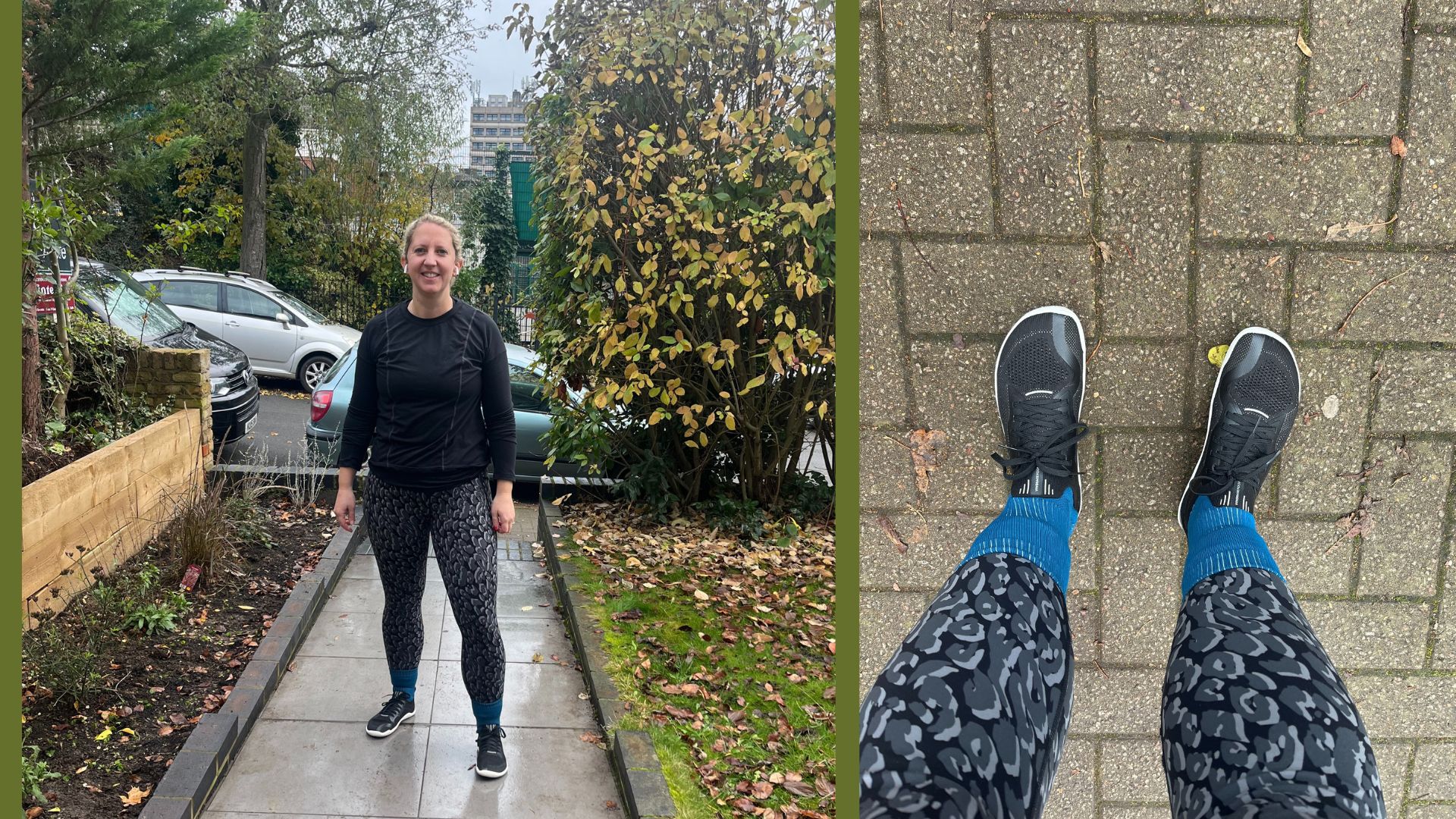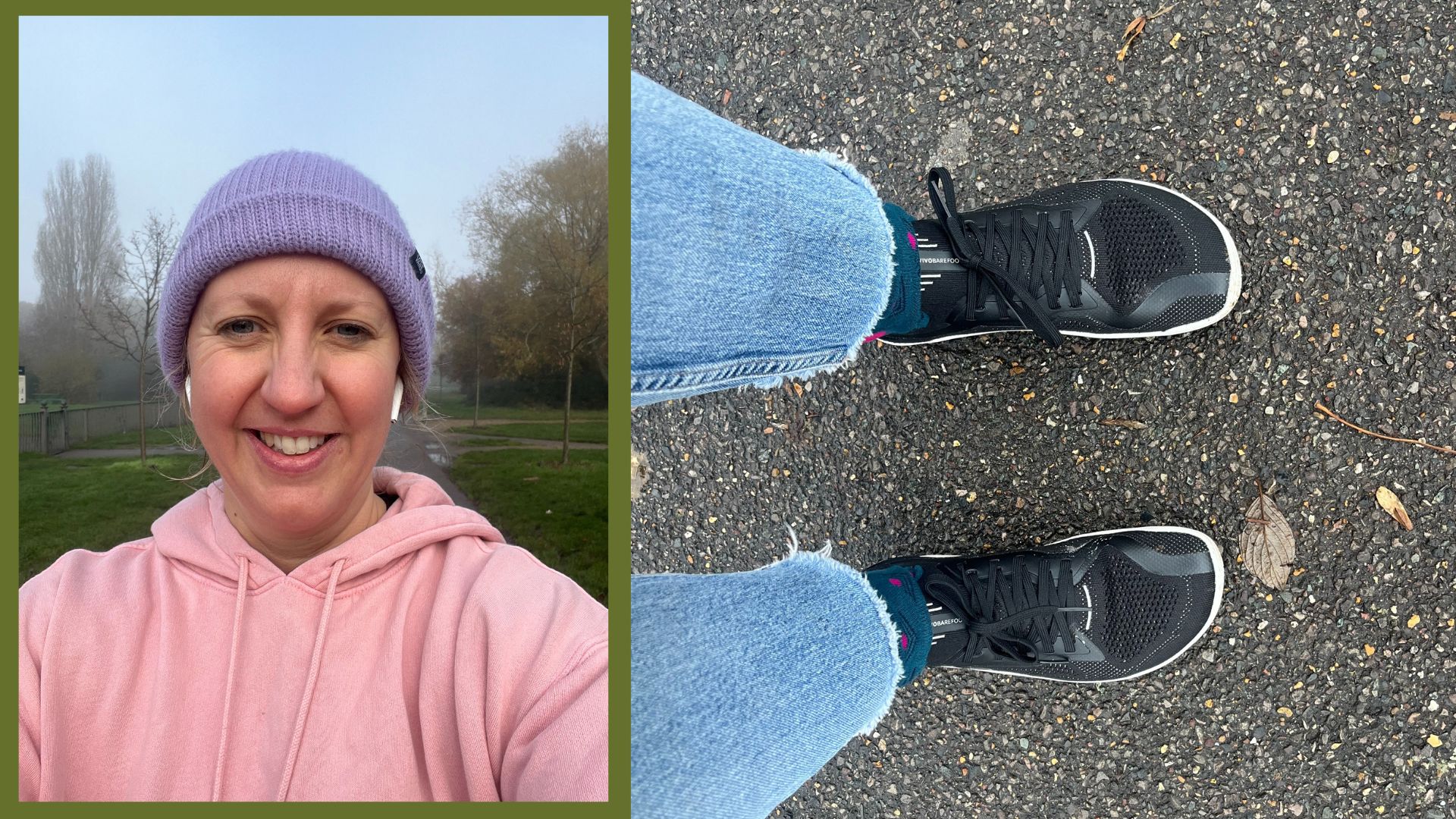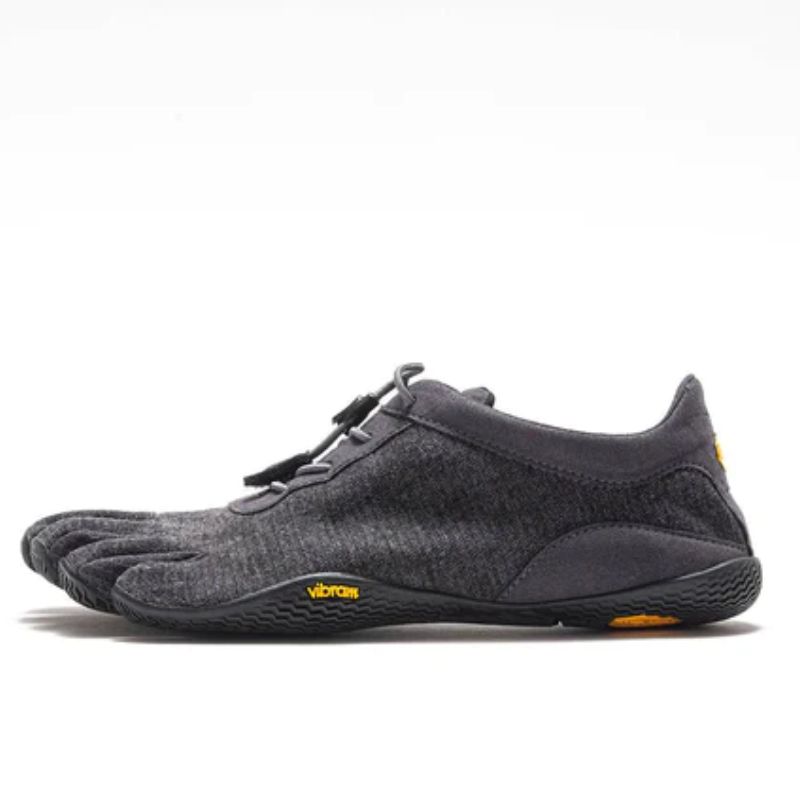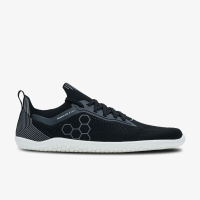I tried wearing barefoot shoes for two weeks during my workouts - here's why I'm never going back
Are barefoot shoes good for you? Here's what writer Kat Storr discovered after two weeks working out in these controversial - yet trendy - shoes

The idea of moving around in shoes so thin you can feel the ground beneath you isn't for everyone - and neither is the design of barefoot shoes - but they have never been more popular in modern times. Movement and longevity specialists rave about them, brands like Adidas and Loewe have jumped on board, and they've even been touted as a preventative for the aches and pains of menopause. Are they worth the hype though? Here, writer Kat Storr reveals what she learnt after trying a pair for two weeks.
I'm not one of the world's most natural runners and as my age increases, so do my running-related aches and pains, but I enjoy the feeling of running and the endorphins it leaves me with. Like millions of other recreational runners, I normally step out in thick-soled trainers when I run the 5km loop around my local park. Thick shoes equal comfort for ankle, hip, and knee joints, right? But as it turns out, that's not necessarily the case.
Sitting down with my friend, who is also a personal trainer, I learnt just how restrictive some of even the best running shoes and best hiking sandals for women can be. The rigid design, thick soles, and pointed toes don't give our feet the flexibility they need when running, walking, or generally working out. Could these be my answer to a smoother run and improving my other workouts?
What are barefoot shoes?
Barefoot shoes are designed to help you reconnect with the ground and have been manufactured to be as wide, thin, and flexible as possible. They are also known as 'zero drop' shoes, as the heel of the foot isn't elevated like it is in other types of running and walking shoes. They are made of lightweight materials, have thin soles, a wide toe box, and offer little to no support.
Many people ask 'are barefoot shoes good for you?' as the idea is that they should promote your feet’s natural strength and movement, while also protecting you from the pavement or park nasties you might step in if you were actually exercising barefoot.
These shoes have grown in popularity in recent years thanks to their ability to reduce the risk of injury, says former Olympic 400m runner Tim Benjamin. "[They can also] strengthen the muscles and joints in your feet and ankles that are naturally weakened as a result of wearing shoes. When practised with accurate form, barefoot running can improve your overall performance." Studies, including one from the University of Liverpool, back up the benefits of wearing these shoes in daily life too. Researchers in this study found a minimum 6-month stint in barefoot shoes can help improve foot strength significantly, which may help wearers maintain a healthy balance and gait when walking.
For my barefoot shoe experience, I tried the Vivobarefoot Primus Lite shoes, which can be used for workouts and light road running.
Sign up to our free daily email for the latest royal and entertainment news, interesting opinion, expert advice on styling and beauty trends, and no-nonsense guides to the health and wellness questions you want answered.
Vivo Barefoot Primus Lite Knit Women's: £145
The shoes are lightweight with a flexible 0.8mm layer on the sole. The sole is puncture-resistant and thick enough to keep sharp stones out while still allowing your feet to feel the ground beneath you.
Are barefoot shoes good for you?
Running coach and clinical exercise physiologist Adnaan Ayoub, who works at the publication Max Health Living, says the key benefit of barefoot running is that it activates the muscles in your feet and changes your biomechanics so your body can cope better with impact. "[When running barefoot, you land] on the balls of your feet rather than the heel, [which] encourages better posture, shorter strides, and less hard impact on the knees/hips," he says.
For those who want to experience all the benefits of running on offer, this could be key too. Research on barefoot running, he notes, from Harvard and the University of Cinncinati, found that switching to this type of shoe can lead to a lower risk of conditions often associated with running and power walking, such as shin splints or plantar fasciitis.
Are barefoot shoes good for you? Definitely, says Ayoub. "You literally strengthen your body from the ground up, from your food musculature to your ankle joints, up to your legs and glutes. As humans, we have the physiological capability to run barefoot, but we've been wearing supportive and restrictive footwear from an early age. Our bodies have adapted and we've ended up with weaker, more injury-prone anatomies," he says. "Barefoot running [and walking], when done with the correct form can begin to correct this and optimise our overall performance."
I found this even in the short time I was testing out my barefoot trainers. My running technique improved and I shifted the impact away from my knees and hips and felt the previously-neglected parts of my body begin to strengthen.

Barefoot running shoes can be worn casually or during a workout to strengthen the foot muscles.
Barefoot shoes vs regular shoes
- Barefoot shoes are lighter: If you are suffering from joint or ligament strain from running every day or constant walking, barefoot shoes could help. They are traditionally lighter than regular shoes - by as much as 500g in some cases.
- Barefoot shoes don't have a thick sole: The flat sole of barefoot shoes encourages wearers to find a more neutral posture, which the University of Duisburg-Essen says can help to prevent lower back pain in women.
- You have to ease yourself into wearing barefoot shoes: The experts don't recommend slipping on your barefoot shoes straight away - easing yourself into wearing them is necessary to help avoid injury.
- You have to be careful where you go with barefoot shoes: Needless to say, barefoot shoes aren't going to be the best walking shoes for women. While some advanced barefooters will take on the trails without this support and you can buy puncture-resistant shoes, you need to consider the terrain (and any potential hazards) you'll be walking on with barefoot shoes.
I tried barefoot shoes for 2 weeks - here's what I learnt
1. You can't just start wearing barefoot shoes
The normal thing to do when you get a new pair of shoes is to put them on and head out for a walk in them - but not with barefoot shoes. The advice from barefoot brands is not to even put them on your feet straight away. Instead, I was advised to spend time walking and standing in my house with no shoes on and really consider how my feet and toes felt being unrestricted. I began to take notice of my posture too, and how the feeling of walking barefoot impacted my ankles, lower-leg muscles, tendons, and glutes.
"Beginning gradually is key through walk/jog intervals, short running sessions on soft ground, and incorporating foot exercises. Patience and listening to feedback from your body accelerate progress," says exercise physiologist Ayoub.
I did exercises such as spreading my toes, raising just my big toe and doing single-leg balances, as done in a full-body Pilates workout or yoga stretches for beginners. Vivo also recommends spending time standing and jumping barefoot before you start wearing the shoes. This is said to help with finding your natural foot position on the ground and your body’s natural up-down rhythm for when you start running. Benjamin says other foot exercises you can do include picking up objects with your toes such as a towel, before moving onto smaller items like a marble. "All of this will boost your proprioception (the signals sent from your feet to your brain) and strengthen the ligaments required to eventually progress to running barefoot safely," he says.
But don't go into this thinking it's easy. I've done feet-strengthening exercises in Pilates classes before but I still found that my ankles and arches ached after walking barefoot around the house. So, just like any other exercise, be sure to give your feet ample time to recover.
2. It's natural if barefoot shoes feel odd to begin with
After spending a few days getting to know my feet at home, I ventured out for my first walk in the shoes. After only ever owning rigid trainers, it felt quite strange to be wearing shoes which were so flexible and thin-soled. I was immediately aware that how I usually walk - heel-first - felt odd in these shoes. In fact, my heels didn’t like it at all. It felt like they were taking all of the impact.
On the expert's advice, I started walking forefooted, using the balls of my feet first. Immediately, I could feel my calves and Achilles working harder. I could also keenly feel that my glutes were a lot more engaged. I don’t think I’d ever been more aware of so many parts of my legs and feet working together while walking. And naturally, with this full-leg pivot, my calves were feeling sore the next day.
The one thing I was nervous of was that the thin soles would cause my plantar fasciitis to flare up. Thankfully, this didn't happen - and Benjamin, who co-founded the fitness app WithU, says this may be because of my gentle start. Rushing into using barefoot shoes can increase the risk of injuries such as tendonitis, plantar fasciitis, pulled calf muscles, and even bone damage like stress fractures, he says, as much as they can help to prevent these conditions.
3. Running with barefoot shoes can improve your technique
Often we think of running technique as something you learn when figuring out how to start running as a beginner. But footwear plays a big role in this too, I learnt when I decided to try running in my barefoot shoes.
The first thing I noticed was that running in my usual style made me feel like my feet were flip-flapping on the ground quite noisily, thanks to the wider toe part of the shoe and because I was running heel first. I also found that the arches of my feet ached while running like this and I felt quite heavy-footed.
On my second run, I made a conscious effort to change my gait and to put the front of my foot down first. The difference was really amazing. I found that I was a lot more upright and the impact on my knees and hips felt a lot lighter. I could definitely feel my calves and Achilles working harder, so I didn’t overdo it and only ran 2km. As expected, my calves ached quite a lot the next day but I experienced no knee or hip pain. Result!
It was my third and final run of the two weeks which felt the best. Again, I didn’t run far - just 4km - and I made sure I warmed my feet up with some exercises at home first. The forefoot style of running felt more natural this time and I felt lighter on my feet, with no hip or knee pain. I also found that my stamina felt greater and I was less puffed out during the run and at the end. I could still feel the effect on my feet, Achilles and calves immediately after and the next day, but this eased quickly.
Where to buy barefoot shoes
Different feet will need different types of shoes because “individual preferences and biomechanics vary”, personal trainer Anya Russell says. She recommends trying out a range of models and brands and consulting with experts at speciality running shops to find the best shoe for your specific needs.

Former Olympic 400m runner Tim Benjamin recommends the brand Vibrams which started creating barefoot shoes in 2006. Their website states: “We weren't born with shoes on. The feet are one of nature’s gifts” and the Olympian says their products are high quality, with a wide choice available. This brand is known for its unique five-toe ‘glove’ design, which enables your toes to spread out individually, while also allowing as much foot movement as possible. Controversial in fashion circles perhaps, but not when it comes to moving barefoot.

A brand recommended by personal trainer James Dixon is Xero Shoes whose products he says are good value for money. ”Their lightweight shoes give your feet the closest feel to being bare. Air flows through well to keep feet comfortable mile after mile,” he says.

Dixon, who works with Fitness Brain, also recommends the Merrell Trail Glove trainers have a barely-there, grippy sole and are available in 9 colours. Minimalist yet versatile, wearers say they are sleek enough to wear casually while being light enough for gym workouts, walking, and running.
How do you go about choosing the perfect pair of barefoot shoes? Russell says elements to look for include a “spacious” area for your toes to go so they aren’t pushed together and have the freedom to move. The sole should be so flexible you could “fold it in half” and there should be just enough cushioning to protect the foot while allowing for a more sensory experience, she adds. As well as running and walking, this can be very helpful for those who do strength training regularly.
If you're looking for a go-to pair, I found the Vivo shoes do all of these things, and more, which is why I picked them up and why Russell uses them when she trains herself.

Kat Storr has been a digital journalist for over 15 years after starting her career at Sky News, where she covered everything from world events to royal babies and celebrity deaths. After going freelance eight years ago, she now focuses on women's health and fitness content, writing across a range of UK publications.
From perimenopause to the latest fitness trends, Kat loves researching and writing about it all. She's happy to give any fitness challenge a go and speaks to experts about wellbeing issues affecting people every day.

